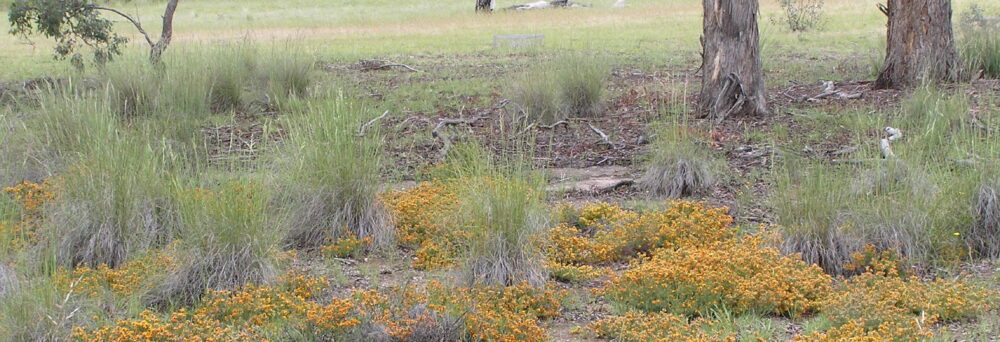Are you covered?
February 2020
If you’ve been thinking that the heat, fires and smoke have been all too much, it’s time now to brace yourself for the inevitable next thing – the rain. With luck this will start very gently and persistently, gently wetting up the soil profile over a number of weeks with little disturbance to the ground cover. However, it is unlikely that we will be that fortunate, and in any case who has a dam that does not need filling? Only overland flow will rectify that; and with summer storms a possibility, a rush of water may be heading for the dams and creeks any time soon.
If you have those fertilized, annual-dominated pastures that I so frequently despair of, the ground cover is likely to be minimal, with lots of bare ground, loose plant fragments, and plenty of dung. The next heavy rain is when the ecological chickens will come home to roost. Overland water flows will carry organic matter (dung, plant parts, fine mulch, soil organic matter) and mineral soil into the dams and drainage lines, effectively exporting nutrients into the Murray-Darling. What was your paddock’s productive potential has now become a source of pollution in waterways, promoting algal growth and killing aquatic life with algal toxins and oxygen deprivation. This is what ecologists call a leaky system, and because there is poor conservation of water, soil, nutrients and organic matter, it is reducing productivity and accelerating the aridity that our district is facing.
Although at one level, soil conservation is well understood both scientifically and practically, it seems that erosion and soil degradation is actually a normalized process, judging from the general state of our landscapes and waterways. Tough perennial grasses are needed to protect priceless soil. Native perennials will grow, even in a drought….

What about the grazed situation? All those kangaroos. We certainly have our share on Gang Gang, but unless they are literally starving, they will avoid the most nutrient-poor plants, as these require more energy to digest than they give up. Hence, the nearby grazed areas have short patches of the more nutritious grasses (here Kangaroo and Wallaby Grasses), but the less digestible species remain.


Wire Grass is one of many native herbaceous species of low palatability that can offer this kind of resilient cover (others locals include Joycea, Dianella, Lomandra, Poa, Carex, Juncus). But they can offer even more. In the dry spring, I was surprised by the degree to which Wire Grass shaded and nurtured nutritious forbs and annuals. In summer, the Wire Grass patches are bursting with insects while the short patches are bereft. This is habitat for wildlife even in the harshest conditions.
From a pasture production point of view, what I am extolling what might be considered a nightmare. Wire Grasses, and their ilk, are hated because, like kangaroos, livestock find them unpalatable. Even management of grassland for conservation should be aiming for a diversity of native species, inclusive of both the soft edible types and the hard, indigestible guardians of the soil. In a later column, I will discuss how these otherwise-maligned ‘tough’ species can be balanced up in a grassland so as to benefit from their special qualities, as well as support species that provide nutritious forage.
